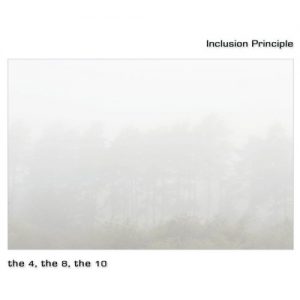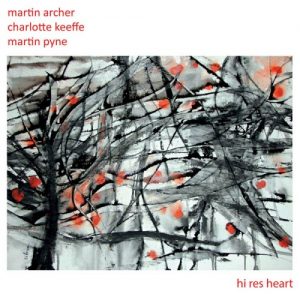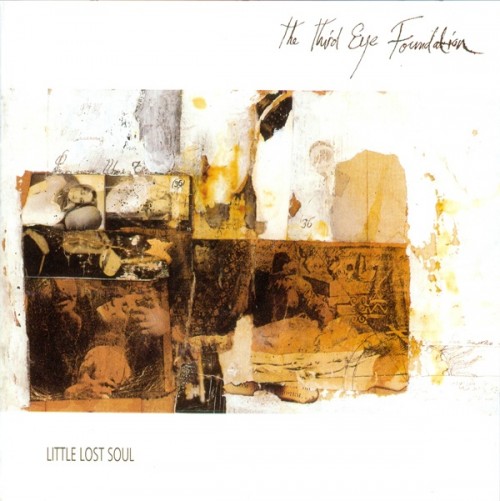 Martin Archer must have been busy over lockdown. Not only was he keeping an eye on the running of Discus, but he had time to be involved in a multitude of collaborative releases, two of which have dropped almost simultaneously and show two very different sides to his not inconsiderable capabilities.
Martin Archer must have been busy over lockdown. Not only was he keeping an eye on the running of Discus, but he had time to be involved in a multitude of collaborative releases, two of which have dropped almost simultaneously and show two very different sides to his not inconsiderable capabilities.
It is a lonely wail of an intro that opens the album and finds the two horn players turning easy circles around one another. The different tones make for a soothing but excited dance. There is a sultry air that is aided by snatches of birdsong. The bluff electronics and scuffling skips hold a beat, while the horns soar and skitter in the breeze. It is an interesting combo, with the insistence of the scuffed beats holding to the earth and pushing the horns on to further acrobatics in the air. The sopranino is as high as a kite at times, a lonely scream.
There is a variance across the pieces here of how much the horns are used. The IDM vibe of “Intermediate Space”, with its typewriter key tones, is like a duet for electronic tinkering. I can imagine the two of them trying to see what sits with what and how much they can push the boundaries. The horns are just snippets, reminders of another era, embellishing the staccato pulses and revelling in one another’s company. Martin and Hervé seem to be searching for drama and intrigue amongst the space and quiet interludes of “Arising And Passing Away”, where the pace is slowed considerably and the sparse glimmer of stars is shaken up by a barrage of harshness; a juxtaposition that you really feel and which takes you into the almost hornless supernatural rustle of “Gentle Persuasion” with its static, space, silence and an aura of mysterious activity. This goes way beyond the preceding pieces, reductive to a point of abstract soundscape. It is like a half-glimpsed territory, with tension in the barely registered sounds; but it moves with an uncanny grace like a heat-seeking predator. Here though, the shakahuchi does lend an Eastern feel to he drama.The industrial beat and wild woodwind of “Object Of Refutation” has vocals that bring to mind a native ceremony glimpsed from afar, but later almost verges on bop territory, such is the ground that these two cover. The final section is a suite of pieces that stand like a portal between two worlds, its slow build and stately beats harbouring feedback and long notes that sound edgy and strange. The electronics duel like gunfighters in a narrow mountain pass with ricochets galore. It is noticeably more hectic, but leads into a kind of limbo with sparse hints of memory.
Behind every sinuous horn there is a jostling, glitchy, uneven beat. Somehow it works, rolling from one cold to one warm scene, always awaiting fresh input, be it repetitive echoes, time warps or unfamiliar motif stretches. It moves into a shadow of the past, the subterranean beat resounding through a ghostly world; and then pulses to a standstill, leaving you breathless that so much has happened. By contrast, the second collaboration, this time with drummer Martin Pyne and trumpeter Charlotte Keeffe, is a classic trio setup, but with the twist that each player brought four ideas to the table which the three then fleshed out according to their whims and the mood of the moment. Pyne’s doubling on vibes and Keeffe’s sweet flugelhorn, along with Archer’s array of instruments, means that this suite of twelve pieces is a constantly evolving series, each starting off from a different perspective but each rooted in that unique intensity that seems to exist in the trio relationship.
By contrast, the second collaboration, this time with drummer Martin Pyne and trumpeter Charlotte Keeffe, is a classic trio setup, but with the twist that each player brought four ideas to the table which the three then fleshed out according to their whims and the mood of the moment. Pyne’s doubling on vibes and Keeffe’s sweet flugelhorn, along with Archer’s array of instruments, means that this suite of twelve pieces is a constantly evolving series, each starting off from a different perspective but each rooted in that unique intensity that seems to exist in the trio relationship.
It is an interesting idea, the tracks being passed like parcels that are being wrapped as they go. Keeffe’s “G.E.M” is more lugubrious, with dreamy washes of synth and the sleepy tones of the horns joined by the delicious echoing vibes. You can hear the breath moving through the reeds, such is the attention to the recording, and it really adds to the intimacy.
Pyne’s drums skip in a warm, jazzy style with plenty of cymbal action, though his ‘”Looking For Gene”, and those opening three set the bar. Pyne’s “Seduction Dance” has a sweet little refrain to which the horns keep returning after meandering around his almost tribal bells and clicks; Keeffe’s “June” is more abstract, working around the stretches of space. There is a slow and sultry swing to the muted 1930s feel of her “Jean”, with spacey synth additions to bring it up to date, and Pyne’s “Earth Memory” has a rolling Eastern feel, with a snowy flurry of horns, the vibes lending a magical air, with hypnotic and repetitive horn motifs drifting over the top. There is something of the woodland in the scampering horns of Pyne’s “Sleep Uneasy”, while Archer’s “The Story In The Mirror” has a New Orleans march feel to it. The mice sound as though they have escaped on Keeffe’s abstract “Tommy”, and the stop-go flurry of horns in Archer’s “Dolly Grip”, all muted and anxious, revel in the gaps between Pyne’s carefully placed beats. It jumps and twists and stops and starts, with the ecstatic release of the horns dragging a response from the drums, which are always carefully placed.It is an excellent end to another successful experiment in lockdown music production. Hi Res Heart sounds great, and you find yourself wondering whether similar results would have been discovered if they were in the room together. For some reason, I think not; and that is what makes this so interesting an album.
Both these albums are well worth investigating and for very different reasons are highly recommended.
-Mr Olivetti-



